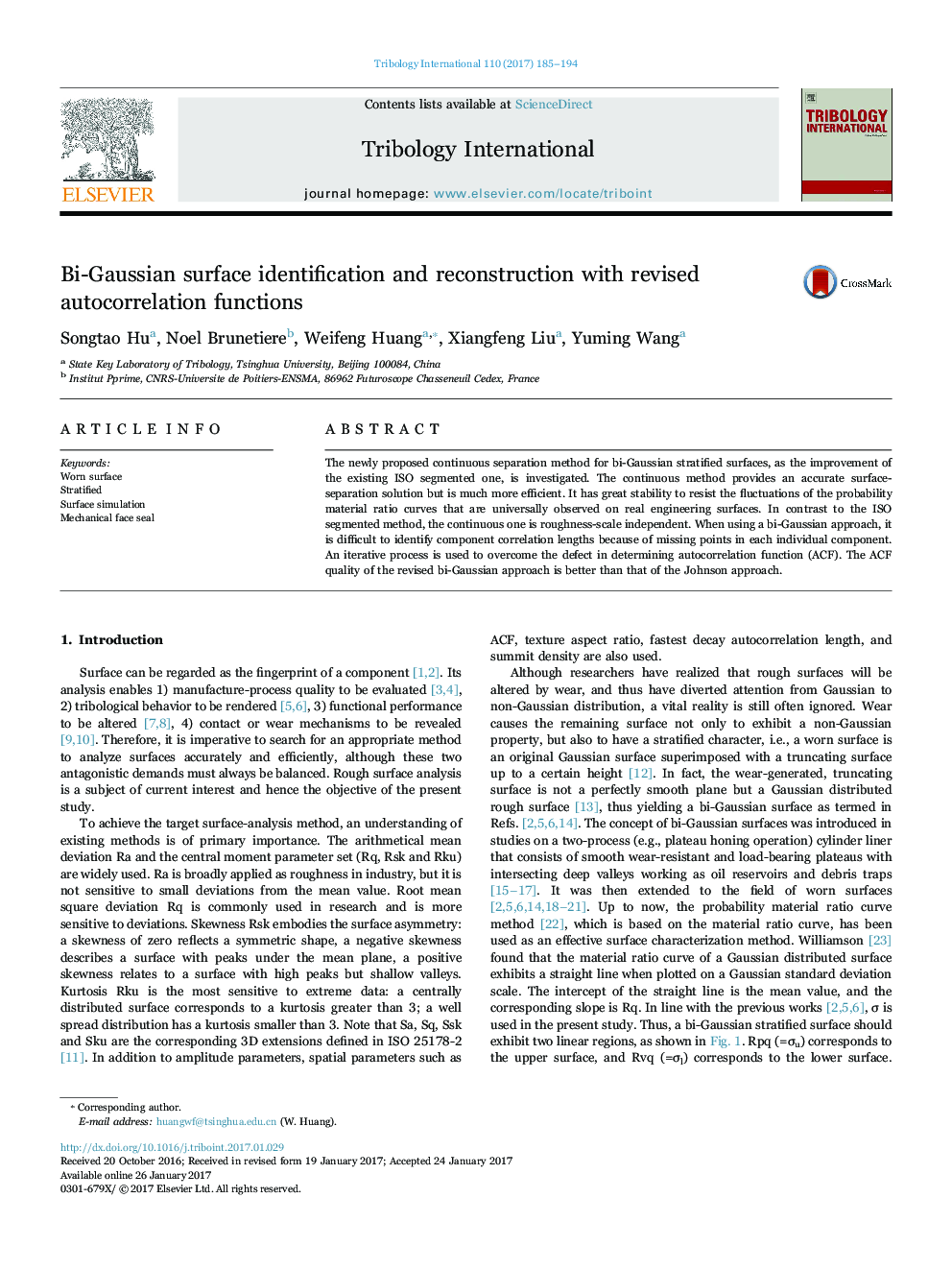| Article ID | Journal | Published Year | Pages | File Type |
|---|---|---|---|---|
| 4986081 | Tribology International | 2017 | 10 Pages |
Abstract
The newly proposed continuous separation method for bi-Gaussian stratified surfaces, as the improvement of the existing ISO segmented one, is investigated. The continuous method provides an accurate surface-separation solution but is much more efficient. It has great stability to resist the fluctuations of the probability material ratio curves that are universally observed on real engineering surfaces. In contrast to the ISO segmented method, the continuous one is roughness-scale independent. When using a bi-Gaussian approach, it is difficult to identify component correlation lengths because of missing points in each individual component. An iterative process is used to overcome the defect in determining autocorrelation function (ACF). The ACF quality of the revised bi-Gaussian approach is better than that of the Johnson approach.
Related Topics
Physical Sciences and Engineering
Chemical Engineering
Colloid and Surface Chemistry
Authors
Songtao Hu, Noel Brunetiere, Weifeng Huang, Xiangfeng Liu, Yuming Wang,
